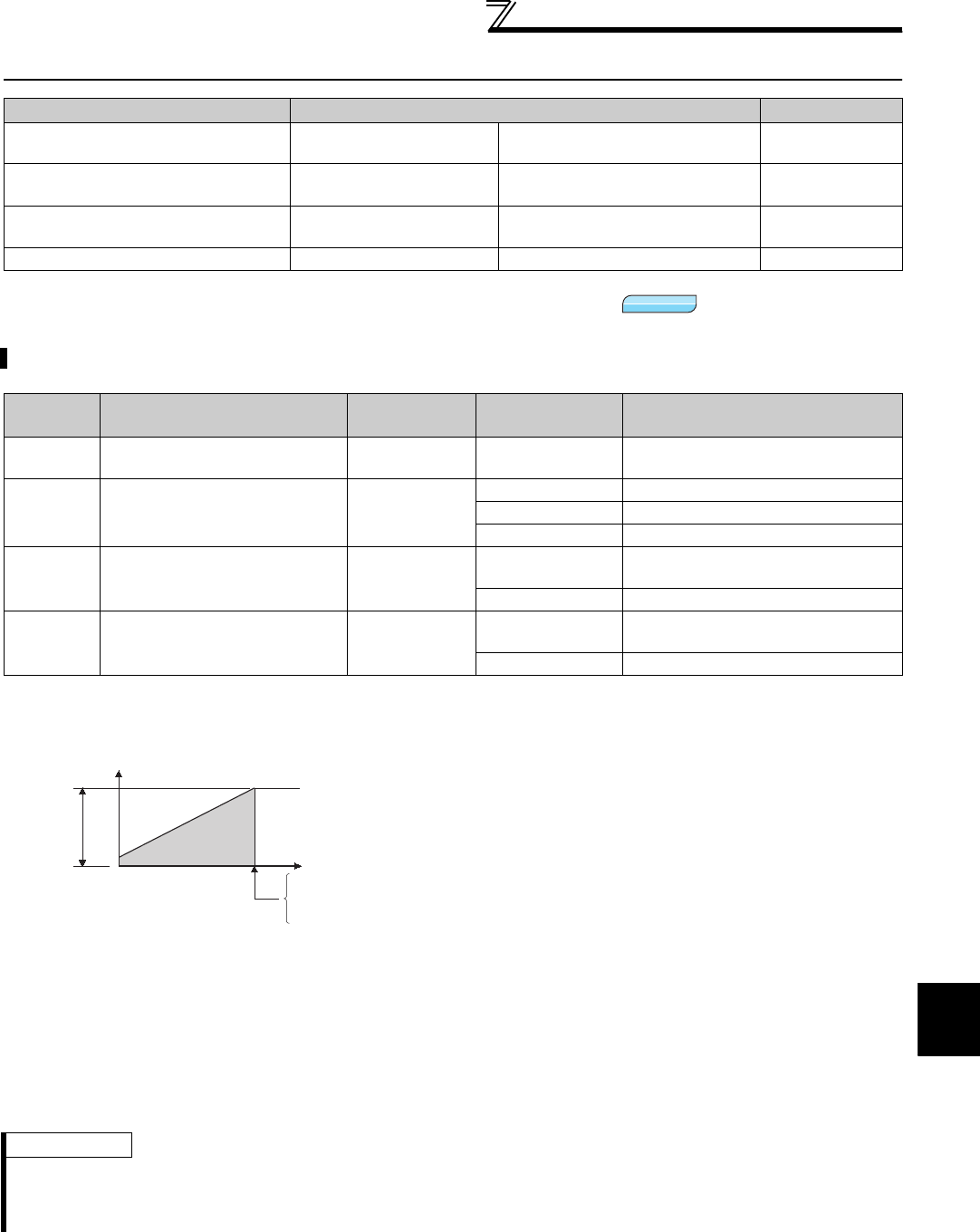
159
V/F pattern
4
PARAMETERS
4.10 V/F pattern
4.10.1 Base frequency, voltage (Pr. 3, Pr. 19, Pr. 47, Pr. 113)
(2) Set multiple base frequencies (Pr. 47, Pr. 113)
⋅ When you want to change the base frequency when switching two motors with one inverter, use the Pr. 47 Second V/F
(base frequency).
⋅ Pr. 47 Second V/F (base frequency) is valid when the RT signal in ON and Pr. 113 Third V/F (base frequency) is valid when
the X9 signal is ON. Assign the terminal for X9 signal input using any of Pr. 178 to Pr. 189 (input terminal function
selection).
Purpose Parameter that must be Set Refer to Page
Set motor ratings
Base frequency, base
frequency voltage
Pr. 3, Pr. 19, Pr. 47, Pr. 113 159
Select a V/F pattern according to
applications
Load pattern selection Pr. 14 161
Automatically set a V/F pattern for
elevators
Elevator mode (automatic
acceleration/deceleration)
Pr. 61, Pr. 64, Pr. 292 163
Use special motor Adjustable 5 points V/F Pr. 71, Pr. 100 to Pr. 109 164
Use the following parameters to adjust the inverter outputs (voltage, frequency) to the motor rating.
Parameter
Number
Name Initial Value Setting Range Description
3 Base frequency 60Hz 0 to 400Hz
Set the frequency when the motor
rated torque is generated. (50Hz/60Hz)
19 Base frequency voltage 9999
0 to 1000V Set the base voltage.
8888 95% of power supply voltage
9999 Same as power supply voltage
47 Second V/F (base frequency) 9999
0 to 400Hz
Set the base frequency when the RT
signal is ON.
9999 Second V/F invalid
113 Third V/F (base frequency) 9999
0 to 400Hz
Set the base frequency when the X9
signal is ON.
9999 Third V/F is invalid
(1) Setting of base frequency (Pr. 3)
⋅ When operating a standard motor, generally set the rated
frequency of the motor to Pr. 3 Base frequency. When running
the motor using bypass operation, set Pr. 3 to the same value
as the power supply frequency.
⋅ If the frequency given on the motor rating plate is "50Hz" only,
always set to "50Hz". Leaving the base frequency unchanged
from "60Hz" may make the voltage too low and the torque
insufficient. It may result in an inverter trip due to overload.
Special care must be taken when "1" (reduced torque load) is
set in Pr. 14 Load pattern selection.
⋅ When using the Mitsubishi constant-torque motor, set Pr. 3 to
60Hz.
REMARKS
⋅ The RT(X9) signal acts as the second (third) function selection signal and makes the other second (third) functions valid. (Refer
to page 235)
⋅ In the initial setting, the RT signal is assigned to the RT terminal. By setting "3" in any of Pr. 178 to Pr. 189 (input terminal function
selection), you can assign the RT signal to the other terminal.
V/F
V/F
V/F
Pr.19
Output voltage (V)
Output frequency
(Hz)
Pr.3
Pr.47
Pr.113


















